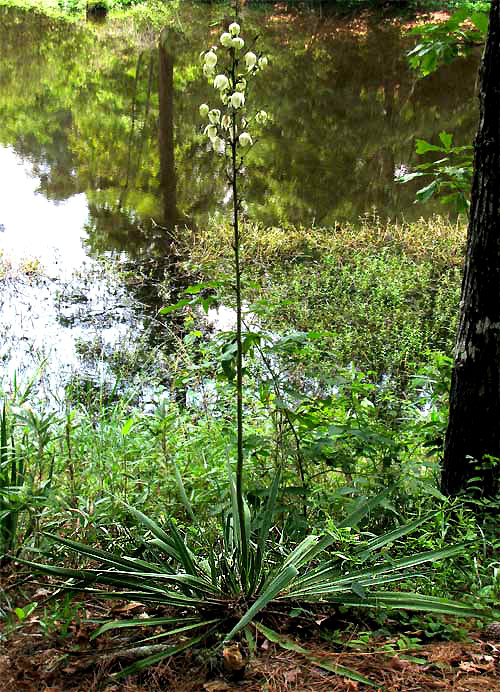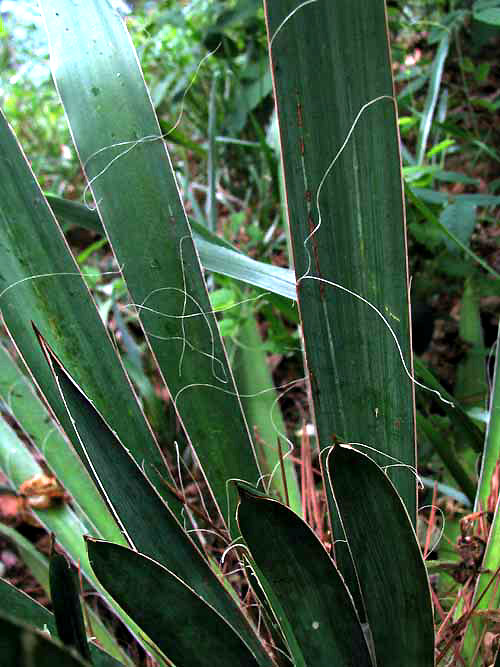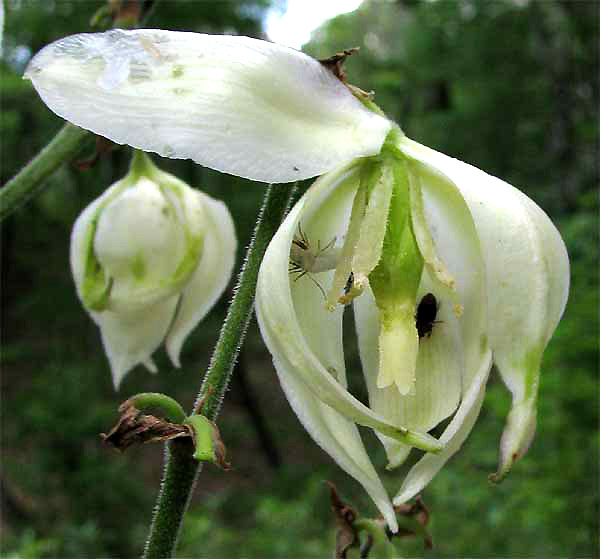Excerpts from Jim Conrad's
Naturalist Newsletter
from the June 23, 2008 Newsletter, issued from the forest near Natchez, Mississippi; elevation ~400ft (120m), ~N31.47°, ~W91.29°:
GULF COAST YUCCAS FLOWERING
Usually we think of yuccas as denizens of arid lands and in large measure that's true. Because the best- known yucca is the Joshua-tree we often visualize them as having trunks. However, nowadays around here the yuccas are flowering, they have no trunks, and they may be native. You can see a wild yucca at Pipes Lake below:

An important feature to notice there is that the inflorescence's central stem, the rachis is densely soft-hairy. Another feature is that blade margins bear long, tough, pale, stringlike filaments, as shown below:

*UPDATE: Since 2008, Yucca taxonomy has undergone much change. In 2024 when I review this page, I find that iNaturalist names our plants Gulf Coast Yucca, YUCCA LOUISIANENSIS. However, Kew's Plants of the World database and GBIF both regard that name as a synonym for Yucca flaccida. As a species, it occurs from southern Mississippi westward through hilly Louisiana into eastern and southeastern Texas.

Above there's a close-up of a flower on which I've bent aside one of the petals to reveal the green ovary with its thick, white stigma hanging down, all surrounded by six white stamens with flattish, fuzzy filaments.
You can see that the blossoms are home to interesting bugs, and I wish you could have seen how many resided there before I bent the petal aside! The flowers' sweet fragrance must attract a rainbow of pollinators. And how pleasant it is lying in a moonlight-glowing tent deep in a still, moist night, with yucca-flower perfume drifting through the netting.